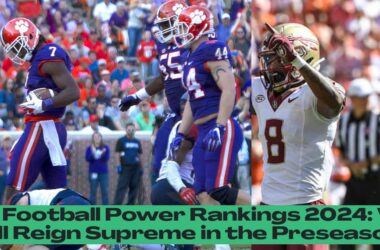A History of Spying in Football: Drones, Interns at Training and Kit Men in Ceilings
The world of football, filled with passion, drama, and fierce competition, has witnessed a fascinating and often covert side: the art of spying. From the days of hidden microphones and clandestine meetings to the more modern use of drones and social media, the desire to gain an edge on the opposition has fueled a long history of espionage in the beautiful game. This article delves into the fascinating history of spying in football, revealing the tactics, motivations, and consequences of this underhanded practice.
- Spies in Football: From subtle observation to sophisticated tactics, spying in football has a long history dating back to the 1960s.
- Early Days of Espionage: Coaches and scouts would attend rival team training sessions, pretending to be casual spectators or journalists to gather intel.
- Rise of Technology: As football became more competitive, spying tactics evolved to include hidden microphones, drones, and social media for gaining an edge over opponents.
- Motivations and Consequences: The desire to understand rival tactics and player strengths drove coaches to employ increasingly sophisticated and sometimes unethical spying methods.
The Early Days: The Subtle Art of Observation
The earliest forms of spying in football were often subtle and discreet. Coaches and scouts would attend opposing team training sessions, meticulously observing drills, tactics, and player movements. This practice, while not illegal, often involved a degree of deception. Coaches might pretend to be casual spectators or even disguise themselves as journalists, all to gather valuable intel. This era of espionage was characterized by its low-tech approach, relying on keen observation and the ability to blend into the crowd.
One of the earliest documented cases of espionage in football dates back to the 1960s. The legendary manager of Real Madrid, Miguel Muñoz, was known for his meticulous preparation. He would often send his scouts to observe opposing teams in the most inconspicuous ways. Muñoz’s methods, often shrouded in secrecy, were said to be instrumental in Real Madrid’s success during this period. These early examples of spying were more about gathering information through direct observation than using sophisticated technology.
However, as football became increasingly professional and competitive, the stakes of spying rose. Coaches began to employ more sophisticated strategies, using microphones hidden in the stands, disguising themselves as fans, or even sending scouts to pose as journalists. The goal remained the same: to gain an advantage over the opponent by understanding their tactics and player strengths and weaknesses. The era of subtle observation was giving way to more sophisticated and sometimes unethical methods.
The story of the 1970 World Cup final between Brazil and Italy is a prime example of the lengths to which teams would go to gain an advantage. The Brazilian team, led by the legendary Pelé, was considered the overwhelming favorite. However, the Italians, under the management of Ferruccio Valcareggi, were determined to find a way to level the playing field. They allegedly sent scouts to Brazil to study Pelé’s every move, even hiring a Brazilian journalist to gather information from Pelé’s close circle. While the Italians ultimately lost the final, their meticulous preparation and willingness to use any means necessary highlighted the growing importance of espionage in football.
The 1980s saw a new era of spying, one that utilized technology more readily. The use of video cameras to record training sessions became common, and coaches began to analyze these recordings to identify weaknesses and exploit them. The rise of satellite television also played a role, allowing coaches to watch games and training sessions from afar. This shift towards technology gave coaches a new weapon in their arsenal, enabling them to analyze opponents in unprecedented detail.
The Rise of the Modern Era: From Drones to Social Media
The modern era of spying in football has been characterized by a convergence of technology and human ingenuity. Coaches and clubs are constantly seeking new ways to gain an edge over their rivals, and the methods they employ are becoming increasingly sophisticated and diverse. Drones, for example, have become a popular tool for scouting opponents. These unmanned aerial vehicles can hover over training grounds, capturing footage of drills, tactics, and player movements. The use of drones has raised concerns about privacy and ethical boundaries, but their ability to provide a bird’s-eye view of training sessions makes them a tempting tool for coaches.
In addition to drones, coaches are also using social media to gather intelligence on their opponents. By monitoring players’ social media accounts, coaches can gain insights into their personal lives, their attitudes, and their off-field activities. This information can be invaluable to coaches who are looking to exploit any vulnerabilities or gain a psychological edge. Social media has become a powerful tool for espionage in football, blurring the lines between the professional and personal lives of players.
The use of technology in spying has also extended to the realm of player recruitment. Clubs are utilizing data analytics and sophisticated algorithms to identify promising young talent. These algorithms analyze vast amounts of data, including player statistics, scouting reports, and even social media activity, to create a picture of a player’s potential. This data-driven approach to recruitment has revolutionized the way clubs scout and sign players, making the recruitment process more efficient and precise.
The Ethics of Spying: A Fine Line Between Advantage and Deceit
The practice of spying in football raises important ethical questions. While some might argue that it is a legitimate part of the game, others believe that it is an unethical and even illegal practice. The line between acceptable and unacceptable espionage is often blurred, and the consequences of crossing that line can be severe. For example, the use of drones to spy on training sessions has been met with criticism from both players and coaches, who argue that it violates their privacy and undermines the spirit of fair play.
The case of Marcelo Bielsa, the former manager of Leeds United, is a good example of how espionage can backfire. In 2019, Bielsa was caught sending a spy to watch a training session of his team’s upcoming opponent, Derby County. The incident resulted in a public apology from Bielsa and a fine for Leeds United. This incident highlighted the potential risks of espionage, particularly when it involves deception and a breach of trust.
Another infamous case involves André Villas-Boas, a former manager of Chelsea, who was accused of using a secret listening device to spy on his own players. This incident led to a public outcry and ultimately contributed to Villas-Boas’s departure from Chelsea. These examples demonstrate that even the most successful coaches can fall victim to the consequences of unethical espionage.
The Future of Spying in Football: A Constant Evolution
The world of spying in football is constantly evolving, driven by technological advancements, the relentless pursuit of an edge, and the ever-present ethical considerations. As technology continues to advance, we can expect to see even more sophisticated methods of spying, from facial recognition software that tracks player movements to AI algorithms that analyze vast amounts of data to predict future performance.
However, it is important to remember that football is ultimately a game of skill, teamwork, and passion. The true measure of success in football lies not in the ability to outsmart or deceive opponents, but in the ability to inspire, motivate, and lead a team to victory. As the game continues to evolve, we can expect the practice of spying to remain a controversial and complex aspect of the sport. However, it is essential that coaches, players, and fans alike strive for fair play and ethical conduct, ensuring that the spirit of sportsmanship prevails.








